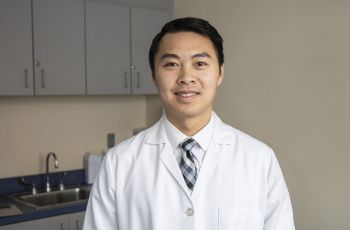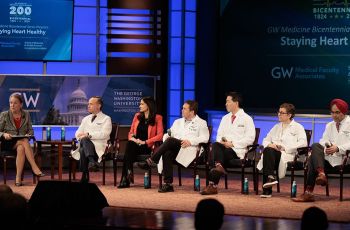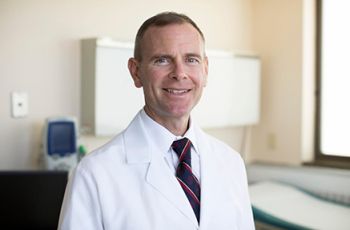We soon will be re-entering “normality.” The COVID-19 surge and social distancing will pass. Someday soon all of us who have sheltered in place, stood 6 feet apart, gloved and masked will venture back into familiar spaces where there are people in close contact. What will a return to normality be like?
While the virus may be in retreat, a sense of safety will take longer to accrue. Comfort we normally feel from physical closeness and touch may still feel hard to access. COVID-19 stood out from past viral epidemics for the pervasive sense of uncertainty and threat that it stirred. The virus stayed invisible but highly contagious during its week or more incubation, turning asymptomatic co-workers, friends, and family members into viral dispensers. No space has felt safe. Moreover, social distancing to stop its spread robbed us of our best means for feeling safe— huddling and cuddling with close relationships.
We will feel exuberant that we can again shop, get haircuts, enjoy favorite restaurants when social distancing ends. Yet, we will not know who is safe or unsafe to touch at first. That will await the scientists. Development of tests that identity asymptomatic carriers, an effective treatment, a preventive vaccine will together attenuate threat in time. Unfortunately, each of these steps will take months to a year or more. In the meantime, we will feel tentative, or even avoidant, about too much physical closeness. Handshakes, hugs, and social kisses likely will disappear, at least initially. Daily life may feel surreal— both familiar and alien at the same time. What can we do in the meantime?
Uncertainty and feeling unsafe are our adversaries to “feeling normal,” not the virus itself. There are practical steps we can take now to reduce uncertainty and feeling unsafe. Let’s look at how they can be implemented in three spaces where we wish a return to “normality”— returning to work or university, rejoining social circles, and dating.
Off the Couch and Back to Work
Returning to work or university will be the easiest space to re-enter. It will feel great to be back. We can work alongside colleagues or classmates collaborating, but not touching. To strengthen a sense of safety, it will be wise to gather informally with colleagues or classmates to discuss what should stand as ground rules when together, for example, no hugs or handshakes, keep a respectful distance from personal space (6 feet is impractical, but what would be reasonable?), no sharing food or drinks. Most importantly, any sign of respiratory illness or sore throat requires exit from workspace or classroom to get tested. Such an informal compact within one’s work group matters more than top-down company or university policies, although the latter hopefully support the former. If these efforts are not supported by administrators, they should be demanded.
The Circle Again Unbroken
Returning to one’s social circle will bring a sense of safety, solace, and catching up with friends and social groups. A challenge will be finding the right physical distance for conversation, but not so close as to threaten safety. No more than 20% of one’s social network is likely to have protective anti-COVID-19 antibodies when social distancing is lifted. This means 80% of one’s family, friends, and acquaintances are either vulnerable to infection (most) or asymptomatic carriers still spreading infection (few). No one wants live with self-blame from infecting a friend. No one wants to be at risk for becoming infected. Yet no one wants a friend to feel personally rejected when a close approach or hug is avoided. Conversations need to happen that set guidelines for social interaction until risk is finally banished by a vaccine. Some members of social networks may lack accurate information, which can be gently introduced: “You may not have been keeping up with this closely, but there are still strong warnings . . . . “ Personal accounts of survivors for what it has been like to endure a COVID-19 infection can be more compelling that statistics for risks of dying. Even when not hospitalized, survivors often describe a debilitating course of fatigue, apathy, aching muscles, cough, and fever, improving then relapsing repeatedly, for a month-long duration, then followed by weeks of slow recovery. All this while alone in quarantine. The Washington Post recently published a collection of survivors’ stories in “‘Like a kitchen sponge’: Patients recount how illness feels” (Achenbach, Guarino, & Cha, Washington Post, March 23, 2020). Reading these accounts makes the case that a shared understanding must be reached for re-constituting safely one’s social circle.
Is It Okay to Kiss on the First Date?
Dating may be the hardest space to re-enter. Touch and physical intimacy are at the heart of romance. Yet even the intimacy of a softly lit table for two in a French restaurant is unsafe were either dinner companion to be an asymptomatic COVID-19 carrier. Encouragement can be taken from the history of the HIV virus, which initially brought the carefree sexuality of the 1960’s to a screeching halt. The lethality of HIV forced awkward dating conversations about sex, which over time evolved into “safe sex practices” that are now taught in school curricula as responsible adult behavior. From the initial awkward conversations that HIV forced, love, tenderness, and romance nevertheless re-emerged like a phoenix. COVID-19 is far more contagious and acutely lethal than HIV infection. For similar reasons, there must be an initial dating conversation, “Have you been well this week? No cough or fever?” It can be prudent to let a new date incubate for a week before going out. However, an infrared forehead thermometer from Amazon for $60 can provide a playful dating ritual in which each partner checks the temperature of the other, signaling to both safety from virus and a desire to relax into the moment together. Romance requires a sense of safety with the other.
Our Future Has Changed
It will take a long time, if ever, before we again feel at ease getting sloshed together on crowded subways, bars, or ticket lines. Sadly, some beloved stores, bars, and restaurants will be gone forever. COVID-19 has robbed families of their parents and grandparents, creating losses that reverberate across generations. Yet, COVID-19 has brought some good changes, some situational (“I’ve called up old friends I’ve not spoken to in a decade.”) and others structural (telehealth for healthcare and work from home for businesses are here to stay). We can fail to embrace the good when fear of the new or nostalgia for the old are too strong. When change we must, three practices can help us embrace the good:
1) What new knowledge or skills did I gain from the COVID-19 crisis? Did threat from COVID-19 bring any fresh clarity about what matters most for my life? For example, those of us in the healthcare professions traditionally are taught much about care for individual patients, but little about public health and care of populations. COVID-19 has been on-the-job training in public health. Personally, the COVID crisis has sharpened my awareness of priorities I’m determined to fulfill before my working days as a medical school faculty member are over.
2) COVID-19 has forced changes in our lives, many destructive but some good. Keep a tally of all good things that COVID-19 brought. For example, I have spent more time on the phone with my children and grandchildren than any other month in memory.
3) Of all the forced changes that COVID-19 brought, which are those that we want to keep? For example, the faculty of our GWU Dept. of Psychiatry had shown little prior interest in telehealth pre-COVID. After COVID-19 forced us to convert fully to telepsychiatry during the crisis, we now will continue to utilize it for the access it brings to those finding it difficult to come physically to our offices.
These three practices can resolve our feeling surreal because they help us look past nostalgia to embrace a new world that has been changed by COVID-10. They can help us move forward with deliberate intent, not simply accepting what circumstances forced.
Well, and Good, But I’m Not Okay
The paragraphs above are intended for those for whom COVID-19 has been a harsh, but ultimately manageable, stressor. Persistent anxiety, depression, suicidal thoughts, or other mental health problems that impair functioning in work roles or relationships may signal the need for consultation with a mental health professional. Stress from COVID-19 can exacerbate a prior mood, anxiety, or posttraumatic stress disorder that had been stable. In other cases, an individual already has been struggling with a pile-up of non-COVID-related life stressors. Addition of COVID-19 then becomes the tipping point when coping begins to slip.
Our George Washington University Dept. of Psychiatry provides evaluation and treatment for a breadth of mental health problems, including anxiety symptoms, severe insomnia, panic attacks, demoralization, depression, suicidal thoughts, and posttraumatic symptoms. Our intake coordinator, Ms. Deborah Chapman, can respond to requests for appointments at (202) 741-2888.



